下面是我在学习HTML和CSS的时候整理的一些笔记,有兴趣的可以看下:
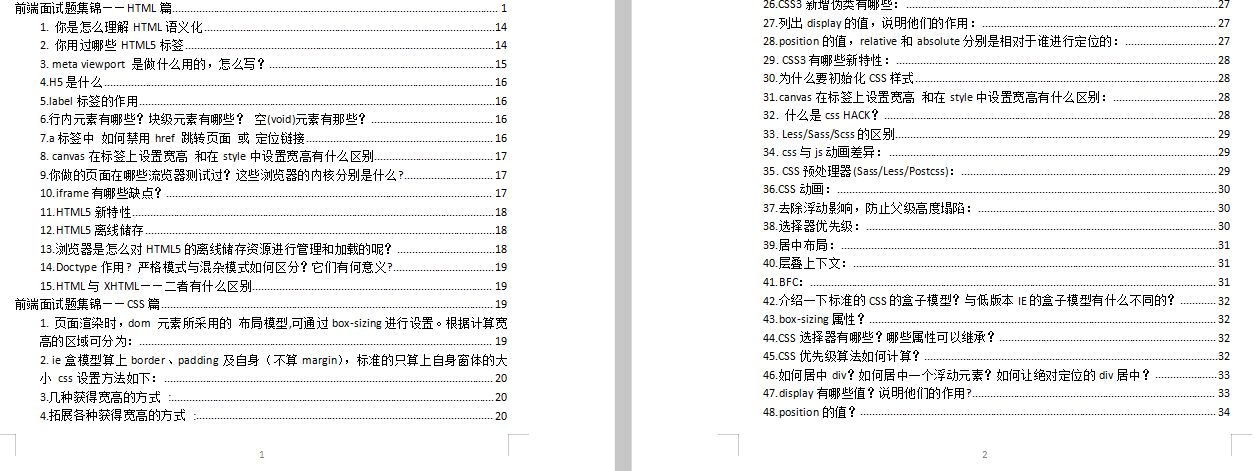
进阶阶段
进阶阶段,开始攻 JS,对于刚接触 JS 的初学者,确实比学习 HTML 和 CSS 有难度,但是只要肯下功夫,这部分对于你来说,也不是什么大问题。
JS 内容涉及到的知识点较多,看到网上有很多人建议你从头到尾抱着那本《JavaScript高级程序设计》学,我是不建议的,毕竟刚接触 JS 谁能看得下去,当时我也不能,也没那样做。
我这部分的学习技巧是,增加次数,减少单次看的内容。就是说,第一遍学习 JS 走马观花的看,看个大概,去找视频以及网站学习,不建议直接看书。因为看书看不下去的时候很打击你学下去的信心。
然后通过一些网站的小例子,开始动手敲代码,一定要去实践、实践、实践,这一遍是为了更好的去熟悉 JS 的语法。别只顾着来回的看知识点,眼高手低可不是个好习惯,我在这吃过亏,你懂的。
1、JavaScript 和 ES6
在这个过程你会发现,有很多 JS 知识点你并不能更好的理解为什么这么设计,以及这样设计的好处是什么,这就逼着让你去学习这单个知识点的来龙去脉,去哪学?第一,书籍,我知道你不喜欢看,我最近通过刷大厂面试题整理了一份前端核心知识笔记,比较书籍更精简,一句废话都没有,这份笔记也让我通过跳槽从8k涨成20k。
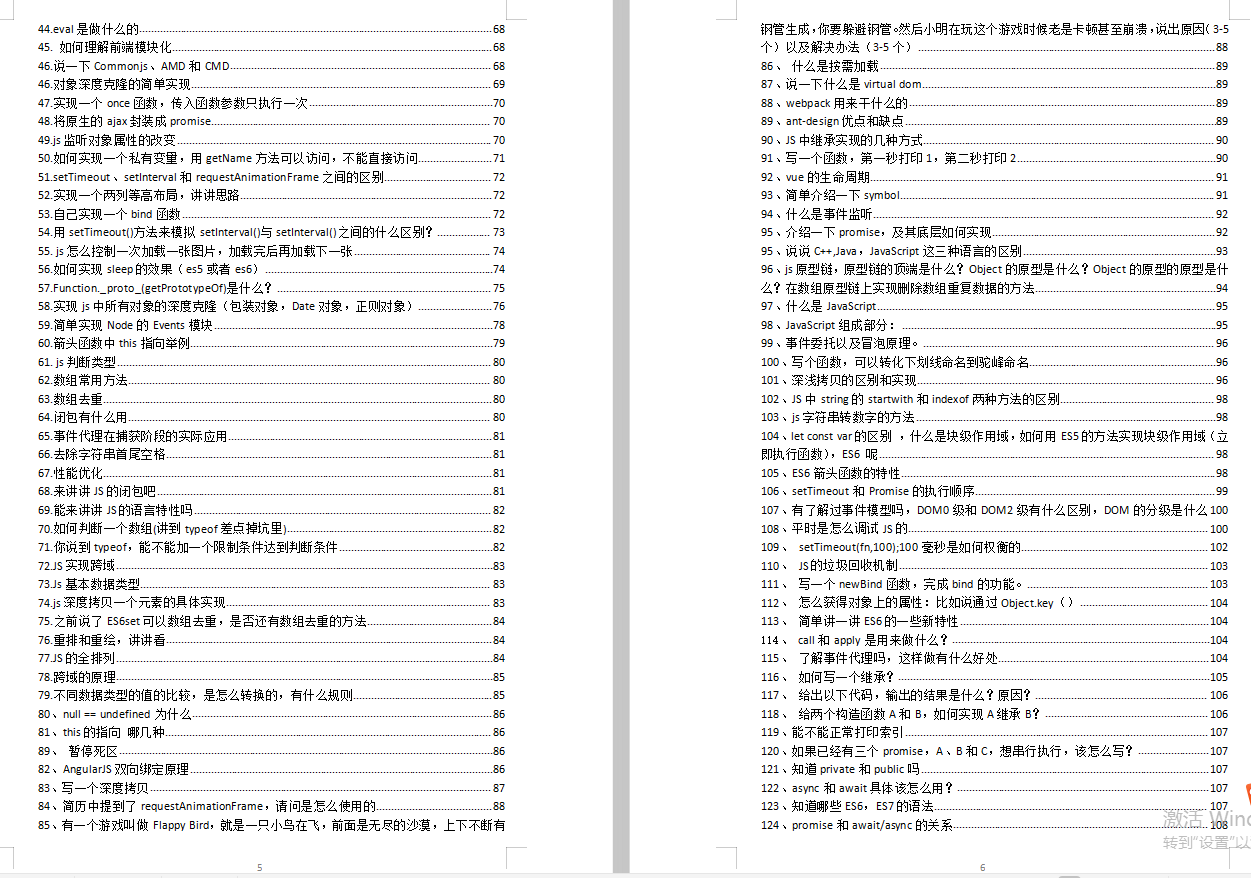
2、前端框架
前端框架太多了,真的学不动了,别慌,其实对于前端的三大马车,Angular、React、Vue 只要把其中一种框架学明白,底层原理实现,其他两个学起来不会很吃力,这也取决于你以后就职的公司要求你会哪一个框架了,当然,会的越多越好,但是往往每个人的时间是有限的,对于自学的学生,或者即将面试找工作的人,当然要选择一门框架深挖原理。
开源分享:【大厂前端面试题解析+核心总结学习笔记+真实项目实战+最新讲解视频】
以 Vue 为例,我整理了如下的面试题。
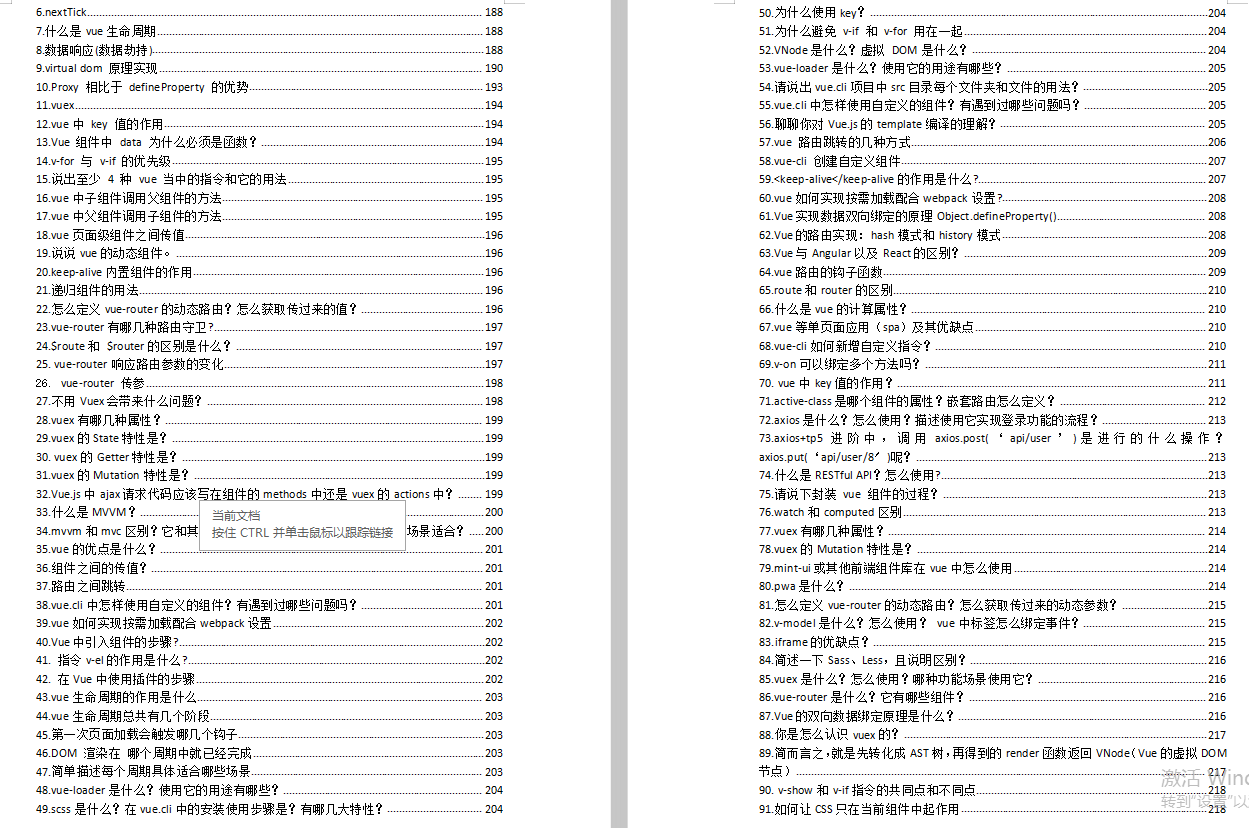
if (version >= 2) {
Vue.mixin({ beforeCreate: vuexInit })
} else {
// override init and inject vuex init procedure
// for 1.x backwards compatibility.
const _init = Vue.prototype._init
Vue.prototype._init = function (options = {}) {
options.init = options.init
? [vuexInit].concat(options.init)
: vuexInit
_init.call(this, options)
}
}
/**
* Vuex init hook, injected into each instances init hooks list.
*/
function vuexInit () {
const options = this.$options
// store injection
if (options.store) {
this.$store = typeof options.store === ‘function’
? options.store()
: options.store
} else if (options.parent && options.parent.$store) {
this. s t o r e = o p t i o n s . p a r e n t . store = options.parent. store = options.parent.store
}
}
}
我们看到 在 Vue 2.0 以上版本,通过 Vue.mixin({ beforeCreate: vuexInit })实现了在每一个实例的 beforeCreate 生命周期调用vuexInit 方法。
而 vuexInit 方法则是:在跟节点我们会直接把store 注入,在其他节点则拿父级节点的 store,这样this.$store 永远是你在根节点注入的那个store。
vue mixin 源码实现
在 Vuex 的例子中,我们通过 Vue.mixin({ beforeCreate: vuexInit }) 实现对实例的 $store 扩展。
全局 mixin 注册
我们先看一下 mixin 是如何挂载到原型上的。
在 src/core/index.js 中:
import Vue from ‘./instance/index’
import { initGlobalAPI } from ‘./global-api/index’
initGlobalAPI(Vue)
export default Vue
我们发现有一个 initGlobalAPI。在 src/global-api/index 中:
/* @flow */
import config from ‘…/config’
import { initUse } from ‘./use’
import { initMixin } from ‘./mixin’
import { initExtend } from ‘./extend’
import { initAssetRegisters } from ‘./assets’
import { set, del } from ‘…/observer/index’
import { ASSET_TYPES } from ‘shared/constants’
import builtInComponents from ‘…/components/index’
import {
warn,
extend,
nextTick,
mergeOptions,
defineReactive
} from ‘…/util/index’
export function initGlobalAPI (Vue: GlobalAPI) {
// config
const configDef = {}
configDef.get = () => config
if (process.env.NODE_ENV !== ‘production’) {
configDef.set = () => {
warn(
‘Do not replace the Vue.config object, set individual fields instead.’
)
}
}
Object.defineProperty(Vue, ‘config’, configDef)
// exposed util methods.
// NOTE: these are not considered part of the public API - avoid relying on
// them unless you are aware of the risk.
Vue.util = {
warn,
extend,
mergeOptions,
defineReactive
}
Vue.set = set
Vue.delete = del
Vue.nextTick = nextTick
Vue.options = Object.create(null)
ASSET_TYPES.forEach(type => {
Vue.options[type + ‘s’] = Object.create(null)
})
// this is used to identify the “base” constructor to extend all plain-object
// components with in Weex’s multi-instance scenarios.
Vue.options._base = Vue
extend(Vue.options.components, builtInComponents)
initUse(Vue)
initMixin(Vue)
initExtend(Vue)
initAssetRegisters(Vue)
}
所有全局的方法都在这里注册。我们关注 initMixin 方法,定义在 src/core/global-api/mixin.js:
import { mergeOptions } from ‘…/util/index’
export function initMixin (Vue: GlobalAPI) {
Vue.mixin = function (mixin: Object) {
this.options = mergeOptions(this.options, mixin)
return this
}
}
至此我们发现了 Vue 如何挂载全局 mixin。
mixin 合并策略
vuex 通过 beforeCreate Hook 实现为所有 vm 添加 $store 实例。让我们先把 hook 的事情放一边。看一看 beforeCreate 如何实现。
在 src/core/instance/init.js 中:
export function initMixin (Vue: Class) {
Vue.prototype._init = function (options?: Object) {
// remove unrelated code
initLifecycle(vm)
initEvents(vm)
initRender(vm)
callHook(vm, ‘beforeCreate’)
initInjections(vm) // resolve injections before data/props
initState(vm)
initProvide(vm) // resolve provide after data/props
callHook(vm, ‘created’)
// remove unrelated code
if (vm.$options.el) {
vm. m o u n t ( v m . mount(vm. mount(vm.options.el)
}
}
}
我们可以看到在 initRender 完成后,会调用 callHook(vm, 'beforeCreate')。而 init 实在 vue 实例化会执行的。
在 src/core/instance/lifecycle.js 中:
export function callHook (vm: Component, hook: string) {
// #7573 disable dep collection when invoking lifecycle hooks
pushTarget()
const handlers = vm.$options[hook]
if (handlers) {
for (let i = 0, j = handlers.length; i < j; i++) {
try {
handlers[i].call(vm)
} catch (e) {
handleError(e, vm, ${hook} hook)
}
}
}
if (vm._hasHookEvent) {
vm.$emit(‘hook:’ + hook)
}
popTarget()
}
在对 beforeCreate 执行 callHook 过程中,会先从 vue 实例的 options 中取出所有挂载的 handlers。然后循环调用 call 方法执行所有的 hook:
handlers[i].call(vm)
由此我们可以了解到全局的 hook mixin 会和要 mixin 的组件合并 hook,最后生成一个数组。
回头再看:
import { mergeOptions } from ‘…/util/index’
export function initMixin (Vue: GlobalAPI) {
Vue.mixin = function (mixin: Object) {
this.options = mergeOptions(this.options, mixin)
return this
}
}
this.options 默认是 vue 内置的一些 option:
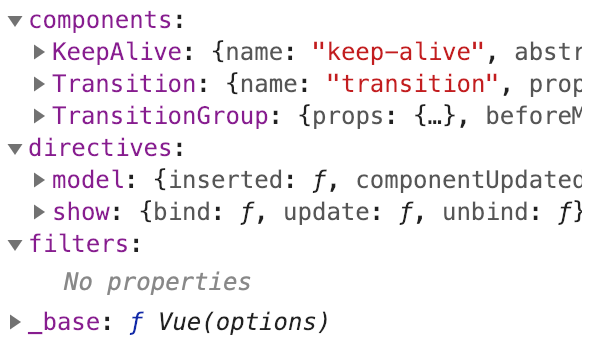
image
mixin 就是你要混入的对象。我们来看一看 mergeOptions。定义在 src/core/util/options.js:
export function mergeOptions (
parent: Object,
child: Object,
vm?: Component
): Object {
if (process.env.NODE_ENV !== ‘production’) {
checkComponents(child)
}
if (typeof child === ‘function’) {
child = child.options
}
normalizeProps(child, vm)
normalizeInject(child, vm)
normalizeDirectives(child)
const extendsFrom = child.extends
if (extendsFrom) {
parent = mergeOptions(parent, extendsFrom, vm)
}
if (child.mixins) {
for (let i = 0, l = child.mixins.length; i < l; i++) {
parent = mergeOptions(parent, child.mixins[i], vm)
}
}
const options = {}
let key
for (key in parent) {
mergeField(key)
}
for (key in child) {
if (!hasOwn(parent, key)) {
mergeField(key)
}
}
function mergeField (key) {
const strat = strats[key] || defaultStrat
options[key] = strat(parent[key], child[key], vm, key)
}
return options
}
忽略不相干代码我们直接跳到:
for (key in child) {
if (!hasOwn(parent, key)) {
mergeField(key)
}
}
function mergeField (key) {
const strat = strats[key] || defaultStrat
options[key] = strat(parent[key], child[key], vm, key)
}
此时 child 为 { beforeCreate: vuexInit }。走入到 mergeField 流程。mergeField 先取合并策略。
const strat = strats[key] || defaultStrat,相当于取 strats[‘beforeCreate’] 的合并策略。定义在通文件的上方:
/**
* Hooks and props are merged as arrays.
*/
function mergeHook (
parentVal: ?Array,
childVal: ?Function | ?Array
): ?Array {
return childVal
? parentVal
? parentVal.concat(childVal)
: Array.isArray(childVal)
? childVal
: [childVal]
: parentVal
}
LIFECYCLE_HOOKS.forEach(hook => {
strats[hook] = mergeHook
})
// src/shared/constants.js
export const LIFECYCLE_HOOKS = [
‘beforeCreate’,
‘created’,
‘beforeMount’,
‘mounted’,
‘beforeUpdate’,
‘updated’,
‘beforeDestroy’,
‘destroyed’,
‘activated’,
‘deactivated’,
‘errorCaptured’
]
在 mergeHook 中的合并策略是把所有的 hook 生成一个函数数组。其他相关策略可以在options 文件中查找(如果是对象,组件本身的会覆盖上层,data 会执行结果,返回再merge,hook则生成数组)。
mixin 早于实例化
mergeOptions 会多次调用,正如其注释说描述的那样:
/**
* Merge two option objects into a new one.
* Core utility used in both instantiation and inheritance.
*/
上面介绍了全局 mixin 的流程,我们来看下 实例化部分的流程。在 src/core/instance/init.js 中:
最后
除了简历做到位,面试题也必不可少,整理了些题目,前面有117道汇总的面试到的题目,后面包括了HTML、CSS、JS、ES6、vue、微信小程序、项目类问题、笔试编程类题等专题。
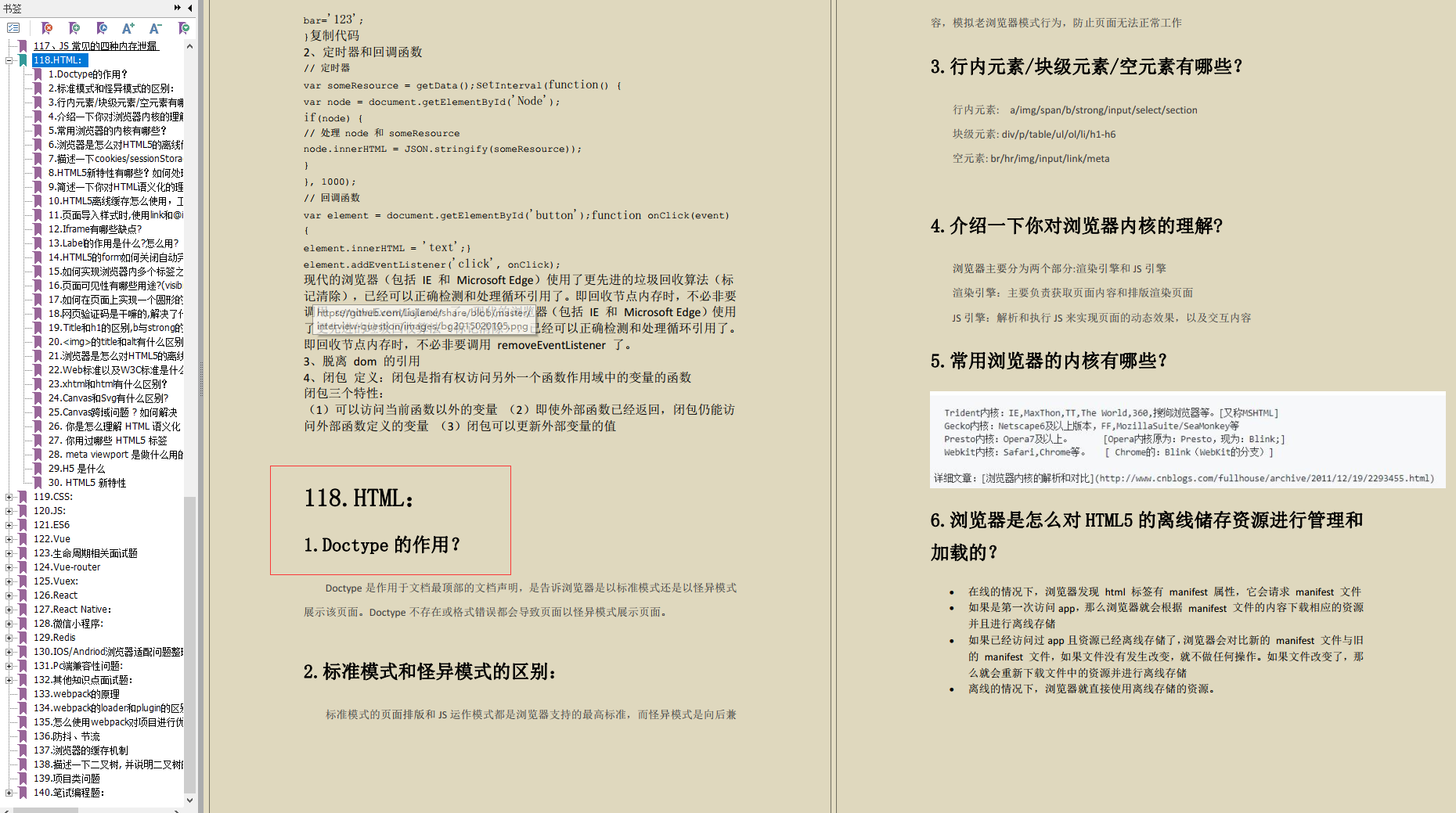








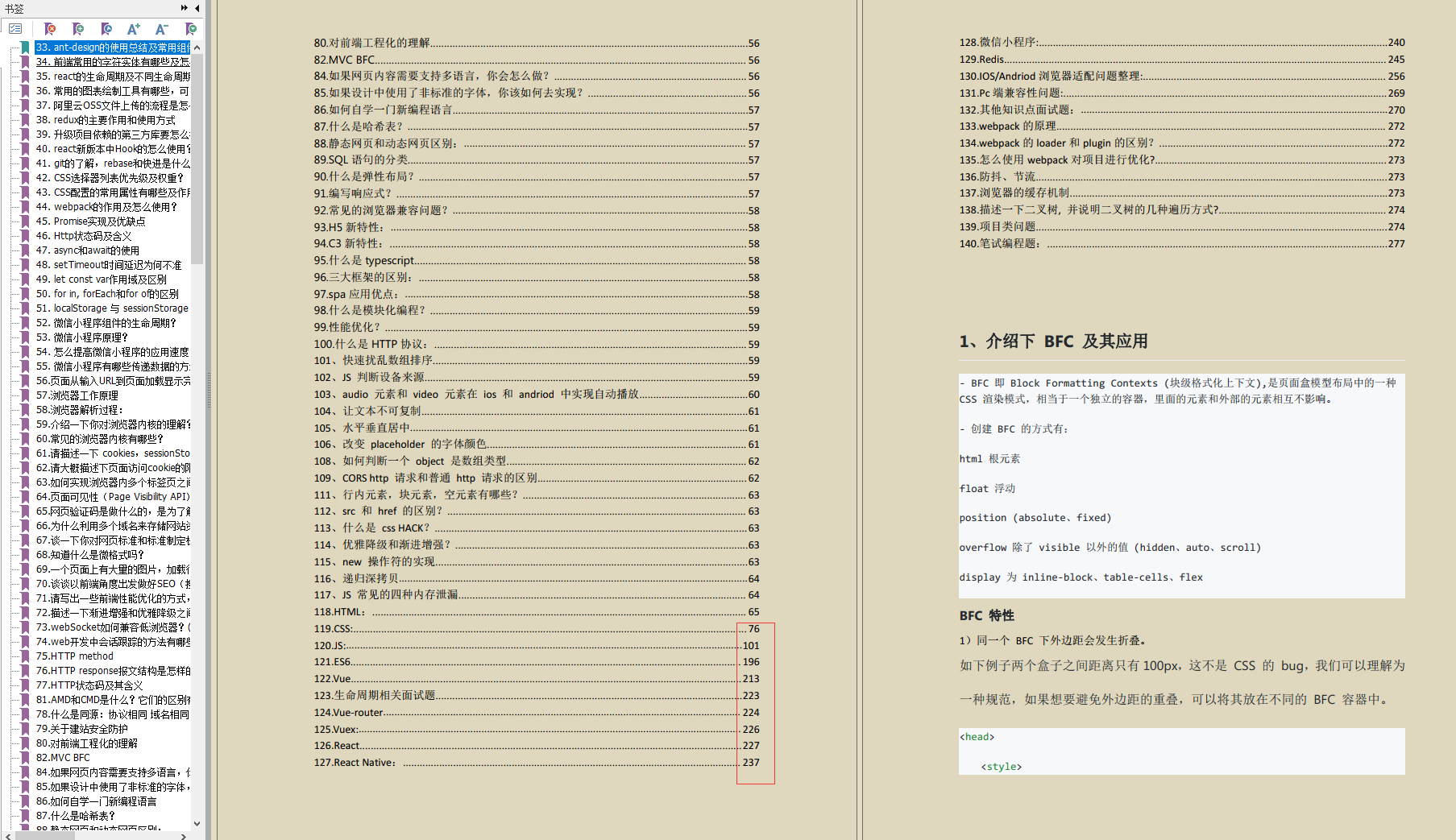














 1440
1440

 被折叠的 条评论
为什么被折叠?
被折叠的 条评论
为什么被折叠?








